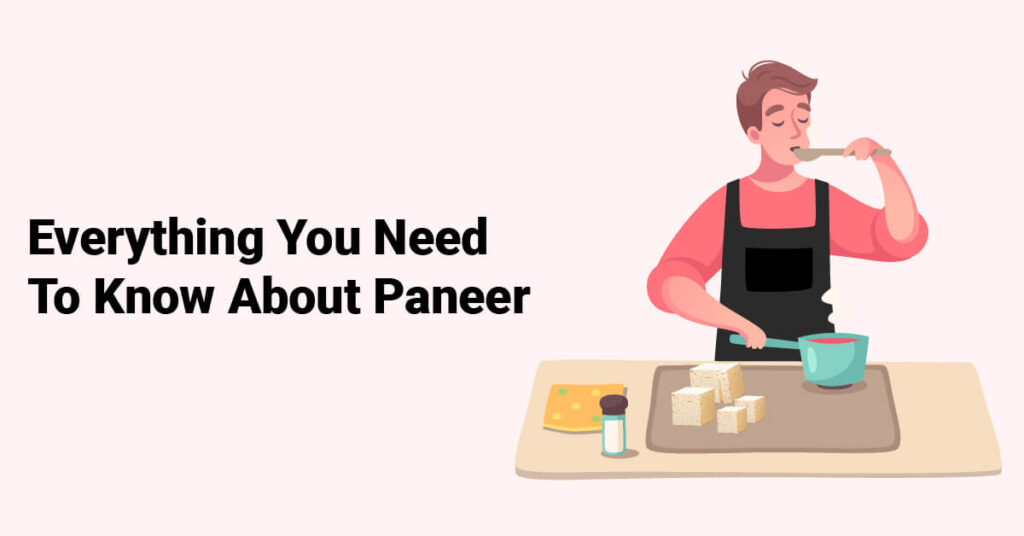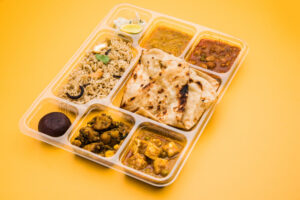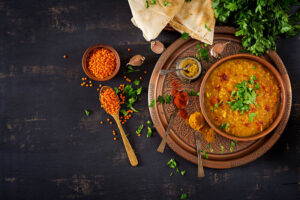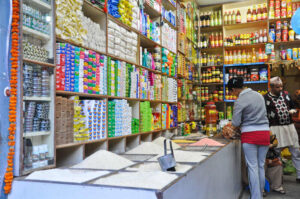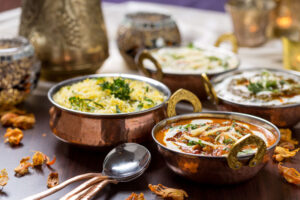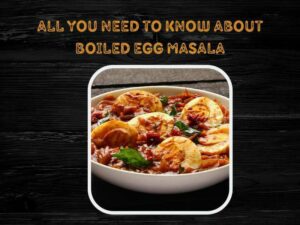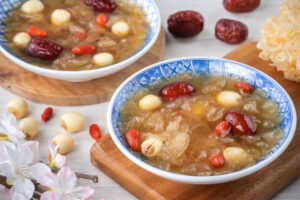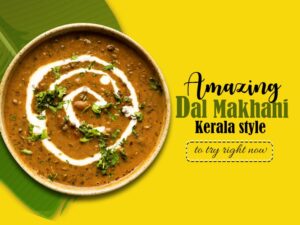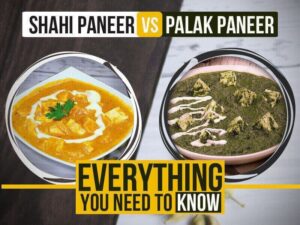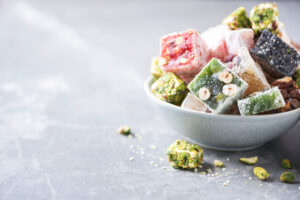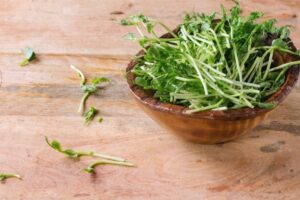Introduction
There are many great delicacies throughout the world that have made their mark on cuisine. So many, in fact, that you may never have heard of some of them before. Some delicacies are ones that you certainly don’t want to miss out on though – one of them is paneer.
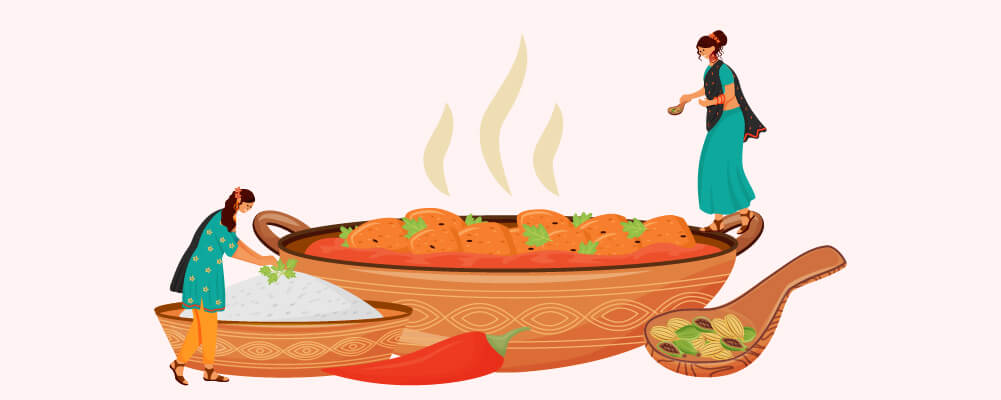
If you’re a cheese lover, then stop what you’re doing right now and find some way to acquire some paneer. It’s certainly something that you will want to try, it’s both tasty and versatile since it can be added to lots of different dishes too.
If you’ve never heard of paneer before, today is your lucky day! Here is anything and everything that you will ever need to know about this wonderful Indian cheese and how you can incorporate it into future recipes.
Table of contents
What Is Paneer?
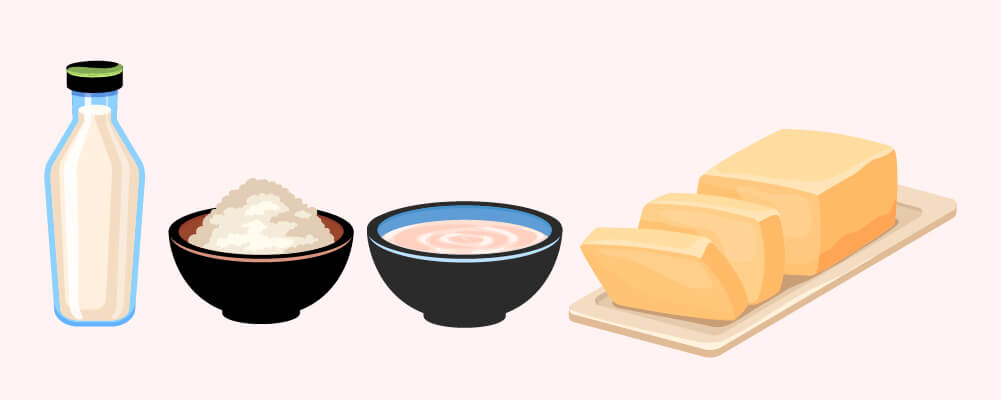
First, what exactly is paneer? You may not know if you haven’t heard of it before. Perhaps you have heard of it, but you don’t know a lot about it.
In essence, paneer is a type of Indian cheese. It consists of curdled milk, in addition to acid from a fruit or vegetable. For instance, it may contain some lemon juice. It’s very delicious and can be used in many recipes.
This kind of cheese is not aged and is a form of soft cheese that will not melt. The proteins in the milk bind together differently to normal cheese, and this means that if you heat paneer, it won’t melt. When you cook with paneer it will also stay in its original shape, and it works wonderfully with all kinds of different spices. Sometimes, the cheese can become a little rubbery if you heat it for too long though.
Paneer is pretty much the perfect cheese for vegetarian recipes. You will most often find it in a block-like form, but some people will choose to make their own from home.
Paneer is pretty versatile – you can add it to different recipes, you can eat it when you’re feeling a little peckish as a simple snack, or it can sometimes be eaten as a breakfast food.
The Origins
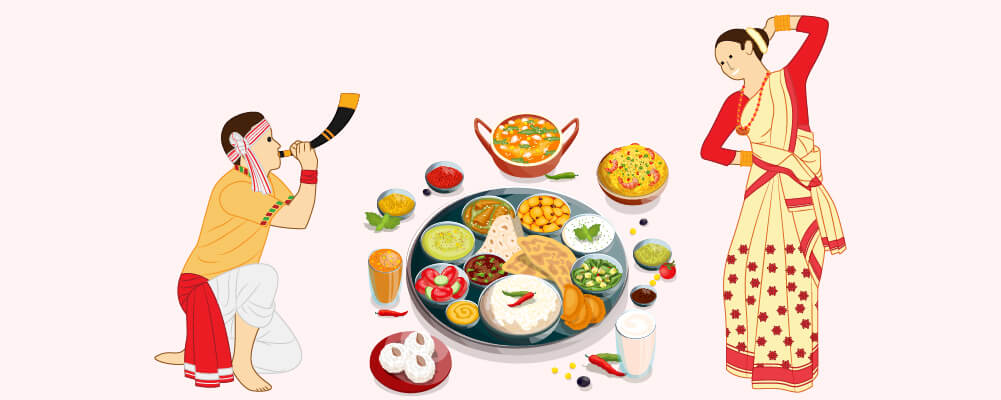
Where Does It Come From?
Where does paneer come from? Well, this kind of cheese can be made from milk taken from either a cow or a buffalo. It can be pasteurized or raw too, and the milk can be semi-skimmed or whole. As previously mentioned, it comes from India, and is primarily made in Nepal, Bangladesh, Afghanistan and Pakistan.
There are mixed options about where precisely this cheese originated from. Some theories suggest that it dates as far back as the 16th century, where it was heralded by Persian and Afghani rulers as a great delicacy. The main thing to note is that this kind of cheese is a huge part of Indian cuisine.
How Is It Made?
Most cheeses are made using rennet and live cultures. This tends to mean that the cheese needs to age in particular conditions, and the humidity needs to be controlled. This is not actually the case with paneer. Instead, paneer is made without the rennet in it. This means that you can make it very easily. It takes just a few hours to make it, and you can even make it yourself from home if you have the correct ingredients for it.
In order to make the cheese, you would need to boil the milk and then curdle it with an ingredient that’s high in acid. This could be something like lime or lemon juice, yogurt, citric acid or vinegar.
It’s ultimately your choice what kind of acid to use. Yogurt tends to be a good choice as it will give you a paneer that’s quite soft but still very firm. You are going to need to drain it well though. If you use a little too much curd though the cheese could end up tasting a little too much like yogurt.
Vinegar is the ingredient that people tend to use the most often since it allows the curdling process to happen a little faster, though using too much of it can also impact the taste. Finally, using lemon juice is good if you want a nice citrus flavor, but if you use too much then the cheese can end up becoming grainy in texture.
When you have the curdled milk solids ready, you would then need to drain them onto a cheese cloth or a muslin. Finally, you would then use a heavy object in order to set the cheese and cube it into smaller pieces.
When it’s ready to eat, the texture is pretty similar to what you would get with tofu. In fact, tofu and paneer are frequently eaten together in dishes, or can sometimes be used as substitutes for one another.
How Is It Eaten?
Paneer can be eaten in a number of different ways, since it’s so versatile!
In most cases, people like to eat paneer in cubes. In this case, the paneer is cut into cubes and is then fried. It’s then served ready to eat. This is the case in certain dishes such as saag paneer. This is certainly not the only way that you can eat paneer, however. Paneer can be cooked in numerous ways – fried, grilled, put onto skewers and roasted above an open flame. There are a lot of options.
In many cases, paneer is quite commonly used in curry dishes. For instance, it is often eaten in palak paneer. This is a form of curry consisting of spinach and paneer. There’s also a curry made out of tomato and paneer known as paneer makhani which is a huge hit.
Likewise, paneer is commonly used in a dish called paneer pakora. This is a recipe where the paneer cubes are covered in batter made out of chickpea flour. It’s then deep-fried and served as a tasty treat that you can snack on. There’s also paneer tikka and so many more recipes that you can cook with this wonderful cheese.
Paneer has a very spongy texture, and this allows it to absorb different spices and flavors, making it a popular additive to many recipes. In some cases the paneer cubes will be fried and then added to a recipe. Sometimes when the recipe is in the process of cooking, the chef will put the fried paneer into some water. This helps to make sure that the cheese doesn’t start to dry while the rest of the recipe is cooking.
Paneer can also be crumbled and put on top of dishes. You can eat it fresh if you like, or you can flavor it using cumin and mint in order to provide some additional flavor. It has a milky flavor when cooked and isn’t a particularly strong cheese, but it will add plenty of flavor to any dish that you want to add it too and is very tasty on its own.
Paneer Dishes
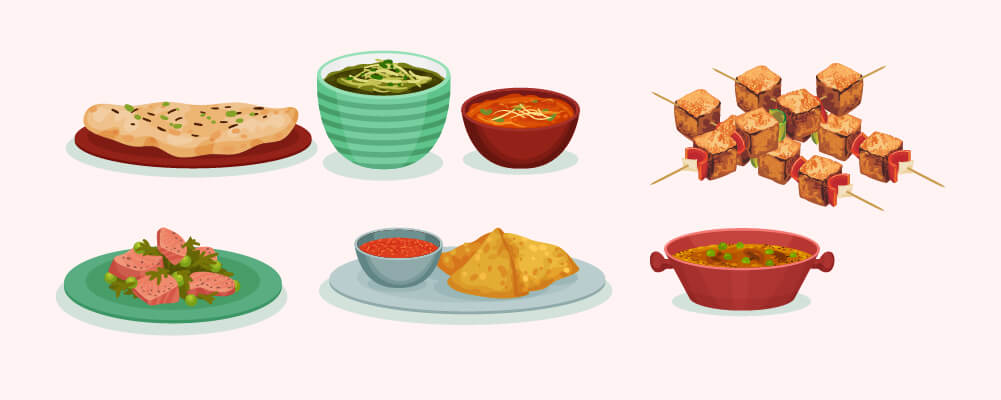
As you may have noticed already, there are actually a lot of different dishes out there that incorporate paneer. They’re pretty delicious! Many of the dishes listed below are delicacies in India and Paneer is the base for all of them.
Here are some of the best paneer dishes that you absolutely have to try!
Paneer Tikka Masala
First is Paneer Tikka Masala. If you’re a big fan of tikka masala in general then you are sure to enjoy this particular dish. This particular recipe is vegetarian and incredibly tasty.
In most cases, paneer tikka masala has a tomato based sauce that’s a little spicy. It’s the ideal recipe if you want a vegetarian dish instead of chicken tikka masala. It’s very easy to make too.
If you are planning on making paneer tikka masala then there are a few things that you should remember. First, if you are making the paneer yourself then you need to make sure that you are using real buttermilk and whole milk.
This isn’t the sort of recipe that you can make with low fat options. Likewise, it can also taste fantastic with diced bell pepper and other vegetables. It also tastes wonderful when served alongside roti, naan or paratha.
Paneer tikka masala consists of two key ingredients. First is the paneer, which we have already covered in this article. The other is tikka, which if you didn’t know is food that has been grilled. With this recipe, the paneer is grilled and then added into gravy. The masala is a type of gravy that’s full of different kinds of spices.
There are a lot of different paneer tikka masala recipes out there, so it’s worth looking online for some suggestions. Here’s a great one.
Samosa
You can also make some pretty delicious samosas out of paneer. Samosas are a kind of food from India that have a rich history. There are many kinds of samosas out there, but you should definitely give the paneer samosa a try!
Samosas consist of a few different ingredients. Samosas are a type of pastry with a crust on the outside, and can have lots of different fillings. Some samosas are made with potato fillings in some cases, and may taste spicy.
The filling of the samosa is what determines the kind of samosa that you are cooking. Western Samosas, for instance, often include green chilies. Peas are commonly seen in Moroccan samosas. In the Punjab region, however, paneer is regularly a necessary component of the samosa.
Paneer Butter Masala
Who needs to go to a restaurant for a tasty masala when you can make it at home? Paneer Butter Masala is a fantastic option if you are looking for a great paneer recipe to try. This recipe is very creamy and is jam packed with flavor. When you try it you won’t be able to get enough.
Paneer butter masala is made out of spices, onions, paneer, tomatoes, butter and cashews. It’s a really great curry based dish that’s simple to make. You can also substitute the cashews for almonds if you wish.
This dish may sound similar to paneer tikka masala, but it’s different. The masala is cooked in butter and has a smooth texture to it. The raw paneer is added to it, rather than grilled paneer in tikka masala. There’s more spice and texture in tikka masala, though they are both just as delicious.
Kadai Paneer
Kadai paneer is made out of bell peppers and paneer, and this is then cooked in a masala full of spices. It’s usually made with ground spices such as coriander and red chilies, and is eaten alongside paratha or naan. It’s an incredibly popular paneer based recipe.
The recipe can be cooked in woks or other similar pans, though the name of the recipe comes from the fact that it’s made in a kadai. This recipe is best made using paneer made by you at home, rather than store bought paneer. You can use store bought paneer of course, but it will taste a lot better if you use your own homemade paneer.
Dum Paneer
Dum paneer is another recipe that’s easy to make and takes very little time to make. It’s a vegetarian dish that can work for pretty much any sort of event. The key ingredient is the paneer, but it also consists of a bunch of other spices and herbs like turmeric, red chili powder, salt, peppercorn, mint leaves, water and more. It depends on the recipe that you follow.
Paneer Bhurji
Paneer Bhurji is a recipe that originates from North India. It’s usually eaten as a breakfast dish. The penner is crumbled through the dish alongside sautéed onions, spices and tomatoes. It’s served hot, and is a delicious and hearty breakfast recipe.
It’s a vegetarian dish, and is a type of variation on another traditional recipe known as Egg Bhurji. Likewise, it can also be turned into a vegan recipe if tofu is used instead of paneer.
Paneer Makhani Biryani
Last but not least is paneer makhani biryani. This dish incorporates fenugreek leaves that have been dried and paneer makhani. To make it, you will need to make a paneer butter masala sauce.
It’s a mild tasting recipe, though you can certainly add more or less spice to it if you wish. It’s a tasty dish that is often best served alongside rice.
How To Make Paneer At Home
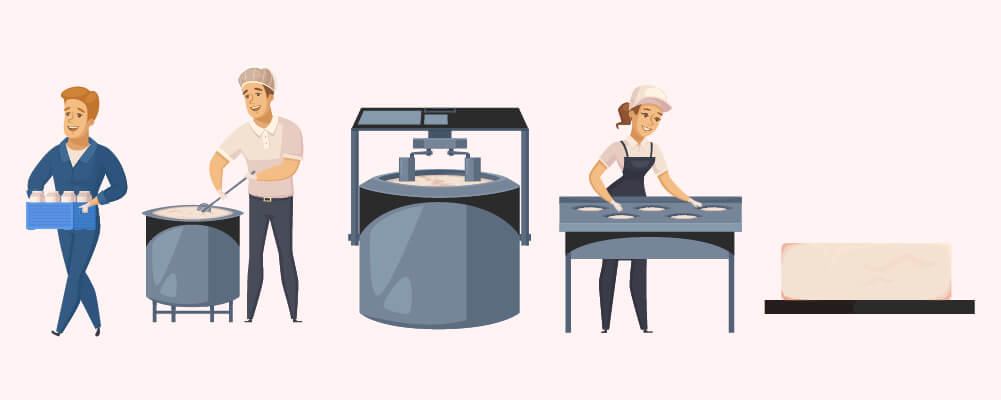
Paneer can be bought ready-made from a store in most cases. While it will still taste great in many dishes if you do use a store bought paneer, it’s always going to taste better if you make your own at home instead.
You will also likely be happy to learn that you don’t need to be any kind of masterchef in order to make your very own paneer. All you need is the right ingredients, a good recipe and a properly functioning kitchen!
Ingredients
So, what ingredients do you need for paneer?
The first ingredient that you are going to need is cows or buffalo milk. Since milk is one of the main ingredients of paneer, it’s very important to ensure that you choose the right kind of milk.
When choosing the milk, make sure that it’s a full fat version that’s fresh. You can’t use expired or stale milk to make paneer – it’s pretty much going to ruin the whole recipe.
You can use cow’s milk, goat milk or buffalo milk for the recipe. You can also use non homogenized and raw milk if you wish. Stay away from skimmed milk since the amount of paneer that you get when you are done will be reduced. Low fat milk should also be avoided. You will need 1 ½ liters of milk – this is roughly 6 cups total.
You will also want to get some form of acid to use in the recipe. For a creamy taste, we often recommend using yogurt, though ultimately the ingredient that you choose to use will depend on how you want the paneer to taste in the end. Vinegar is the ingredient that is most commonly used to make paneer. For the sake of simplicity, we are going to use vinegar for this recipe. 2-3 tablespoons should do the trick.
Step 1
First, turn the heat on your stove on to medium, and place a heavy bottom pot onto it. Pour your 6 cups of milk into this pot and allow it to come to a slight boil. Make sure that you don’t turn the heat up too high, since this could boil too much of the milk or could result in the recipe cooking incorrectly.
Step 2
By this point, the water should have come to the boil. If that has happened, great – turn the heat off for a moment. You should make sure that you have your acid on hand ready for this next step. If you are using vinegar then measure out 2 tablespoons and put it into the milk mixture in the pot.
Alternatively, you will need to add around ¼ cup of yogurt to the mix instead if that’s what you are using. It is vital that you do not use both, as it could ruin the recipe – in the best case scenario, it’s certainly not going to taste very good!
When you have added the new ingredients to the recipe, make sure that you stir it thoroughly for around a minute. You will want to make sure that the ingredients are well distributed throughout the pot.
Step 3
You’re going to need to work quickly for this step! When you add the acid into the milk in the pot, the milk is going to curdle straight away and any solids are going to detach from the whey. This is important, as if you don’t notice that the milk is curdling, you are going to need to turn your heat back on and keep on boiling it until the solids have totally separated.
In some cases you may need to add a little more of your acid ingredient. If you’re using vinegar, then you would need to add around one more teaspoon of vinegar in this situation.
If you are using non homogenized milk then you should also remember that this is going to curdle much faster than other kinds of milk, since homogenized milk has been specifically designed to last longer on supermarket shelves.
Step 4
Has your milk curdled yet? If it has then you will notice that the whey looks clear. It’s not going to look like milk like it has been previously, just a clear fluid. It may look somewhat green or yellow, but it’s never going to look milky.
When you notice that this effect has been achieved, you must then turn off the heat. If you fail to do this then the whey can start to look grainy and hard, and this is not suitable for making the paneer.
When your mixture has properly curdled, the next thing to do is to drain it. To do this, get a colander and place it over a pretty decently sized bowl. The colander is important as it’s going to collect the whey that has strained. Layer some cheese or muslin cloth on the colander, and then put all the milk that has curdled into your colander.
Step 5
Once you have followed the above steps, you will likely notice that the curdled milk mixture reeks of whatever acid you have put into it. Vinegar can emit a particularly strong odor. You need not worry if this is the case – all you need to do is pour a bit of cold water over the top of it, and you will then remove the smell of the acid.
Make sure that you thoroughly rinse the paneer mixture out in order to clear it of the vinegar – you just need to hold it under the water as it runs for a while in order to do this.
Now your mixture will be full of water, in which case you just need to squeeze it dry of the mixture. That’s what the cheese cloth is for! Make a knot in the cloth above where your soon-to-be cheese is and hang it up on a hook or something in order to drain any extra whey out of the mixture. When it has finished draining your paneer still needs to be fairly moist in terms of texture. Allowing it to hang for roughly 30 minutes should do the trick.
Step 6
Now it’s time for the final step! Grab your paneer in the cloth, and place it onto a flat surface like a wooden board or a plate. Wring the cloth in order to create a round sort of shape. Then get a larger object – this should weigh around 6-7 lbs. Put this object on top of the paneer, and keep it there for around 3-4 hours in total.
After this time period is done, you can then take away the cloth, and you will be left with a round circle of paneer cheese. It may look a bit dented but don’t worry, as this is pretty normal for paneer.
After this point your paneer is now ready and can be served in whatever way you wish. As we mentioned earlier, in most cases paneer is in cubes, so you will need to slice it. Make sure that it is stored correctly after you have finished making it.
Storage Guidelines
If you want to keep some of your paneer for later on and don’t intend to use it all in one go in a recipe, then you are going to need to ensure that you store it correctly. Thankfully the storage isn’t overly complicated. First, get a container and fill it with water.
Then, put the paneer inside this container filled with water and put it in the refrigerator. The water is important as without it the cheese may be prone to drying out. You can usually keep it in this condition in the refrigerator for around a week, after which point it most likely will not be suitable for eating. You may also need to replace the water every few days or so.
Alternatives to Paneer
If for some reason you are unable to use paneer, then you need not worry. In many cases there are suitable alternatives that you can use instead of paneer, and many of them are suitable for a vegan lifestyle. For instance, you can try Mexican queso blanco which has many similar characteristics to paneer, and you can find it fairly easily in stores.
You could also use a mild feta cheese or some firm tofu. It’s also possible to use cottage cheese. The taste may be a little different, of course, but in many cases these can work as good alternatives if you require something to use instead of paneer. The dishes will usually tend to taste better with paneer though, so keep that in mind.
Benefits Of Eating Paneer
If you still aren’t sold on giving paneer a try, then let us make one final attempt to change your mind! It turns out that there are actually a number of benefits to eating paneer beyond the fact that it tastes great.
For starters, paneer includes a lot of calcium and vitamin D, important vitamins that are needed to lead a healthy lifestyle. These ingredients are both good for strengthening your teeth and bones, whether you’re a child or an adult.
Calcium is also essential for the functionality of your nervous system. It contains magnesium too, which is critical for keeping your blood sugar levels in check. It’s good for your immune system, heart and more.
Paneer contains a lot of protein too, though this does in part depend on how it’s made. If you’re using milk that’s full fat then likewise, you’ll get plenty of healthy fats from paneer too. This makes it a good choice for giving you energy and keeping you full throughout the day.
If you’re looking for a snack that could potentially keep you full for hours on end, then you can simply bring a cube of paneer with you and chew on that for a quick energy boost.
If you are looking to lose weight, then you definitely don’t want to be missing out on paneer. As we previously mentioned, paneer is rich in healthy fats and protein, alongside conjugated linoleic acid.
All of these things are important for weight loss efforts, and the acid in particular can help to aid your metabolism. It can be added to many healthy foods like salads too in order to provide a little extra flavor to a dish.
In essence, paneer is pretty much the perfect food for health, so long as it’s eaten in moderation.
Summary
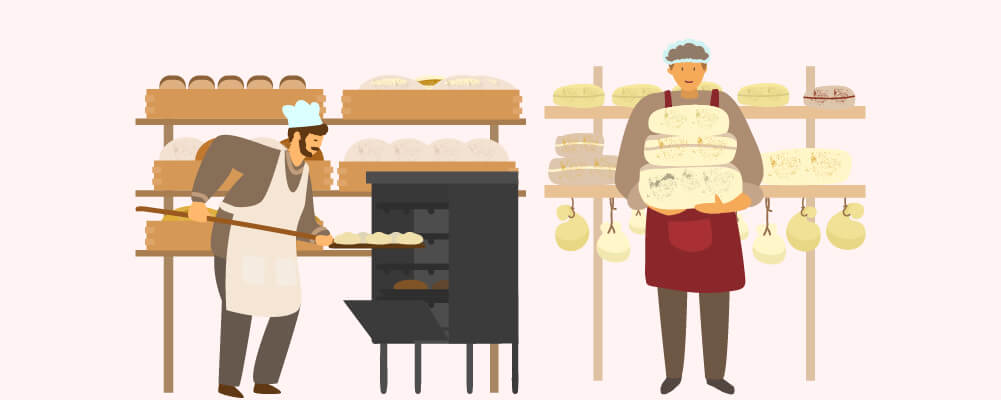
Paneer is a fantastic type of Indian cheese that you simply have to try, even if it’s just once. It’s so versatile that you can add it to practically any dish, and since it’s vegetarian friendly it can also be a very inclusive ingredient too!
This delicious cheese is truly underappreciated, and is full of a lot of hidden benefits. With that in mind, what’s stopping you from grabbing some paneer from your local grocery store right now? It’s time to try something new!
